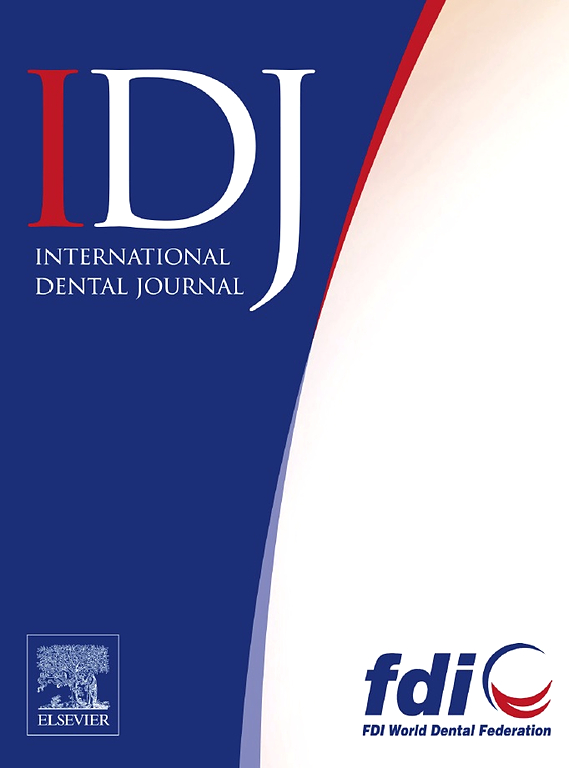2型糖尿病患者唾液中升高的二肽和农用化学物质:双源代谢组学研究
IF 3.7
3区 医学
Q1 DENTISTRY, ORAL SURGERY & MEDICINE
引用次数: 0
摘要
简介和目的2型糖尿病(T2DM)是一种普遍的代谢性疾病,受内部代谢紊乱和外部暴露(称为暴露体)的影响,暴露体增加了疾病风险。鉴定唾液代谢物是检测内源性和环境因素生物标志物的一种很有前途的方法。本研究采用了唾液内源性代谢物和暴露体的双重分析方法,旨在通过整合生物和环境因素,全面了解T2DM,从而改善生物标志物的发现和风险预测。方法采用超高效液相色谱- q -精质谱联用技术对39例T2DM女性和40例健康对照的唾液代谢物进行分析。各组按年龄、性别、牙周炎、血脂异常和高血压进行匹配。鉴定的代谢物被映射到人类代谢组数据库和血液暴露清单使用美国环境保护署的资源。结果主成分分析显示,内源性代谢物和暴露体具有明显的聚类,因此需要进行单独的分析。在内源性代谢物类别中,糖尿病组和非糖尿病组之间显著差异的代谢物中有64.5%是二肽(错误发现率<;0.05,对预测的可变重要性>;2)。其中,Gln-Trp和ph - asn是T2DM的主要预测因子,曲线下面积为0.87,而His-Phe、His-Tyr、Met-Tyr和Leu-Gln的曲线下面积为0.85。在暴露体类别中,单变量回归显示合成二肽与农化暴露体和空腹血糖水平之间存在显著关联,其中胺酰肼显示出最大的效应值。结论利用唾液的非侵入性收集,这些发现强调了唾液二肽的诊断潜力,并强调了处理暴露体在T2DM管理中的重要性。通过整合内源性和暴露性分析,本研究提供了一种新的方法来识别代谢和环境风险因素,推进生物标志物的发现和风险预测,以改善T2DM的早期诊断和个性化管理。本文章由计算机程序翻译,如有差异,请以英文原文为准。
Elevated Dipeptides and Agrochemicals in the Saliva of Type 2 Diabetes Mellitus Patients: A Dual Origin Metabolomic Insights
Introduction and aims
Type 2 diabetes mellitus (T2DM) is a prevalent metabolic disorder influenced by internal metabolic disruptions and external exposures, known as exposomes, which increase disease risk. Identifying salivary metabolites is a promising method to detect biomarkers for both endogenous and environmental factors. This study utilised a dual approach to profile salivary endogenous metabolites and exposomes, aiming to provide a comprehensive understanding of T2DM by integrating biological and environmental factors, thereby improving biomarker discovery and risk prediction.
Methods
Salivary metabolites were analysed via ultraperformance liquid chromatography coupled with Q-Exactive mass spectrometry in samples from women with T2DM (n = 39) and healthy controls (n = 40). The groups were matched for age, sex, periodontitis, dyslipidaemia, and hypertension. The identified metabolites were mapped to the Human Metabolome Database and the Blood Exposome List using U.S. Environmental Protection Agency resources.
Results
Principal component analysis revealed distinct clusters for endogenous metabolites and exposomes, leading to separate analyses. In the endogenous metabolite category, 64.5% of the metabolites significantly differing between DM and non-DM groups were dipeptides (false discovery rate <0.05, variable importance for the projection >2). Among the dipeptides, Gln-Trp and Phe-Asn were identified as the top predictors of T2DM, with an area under the curve of 0.87, while His-Phe, His-Tyr, Met-Tyr, and Leu-Gln had area under the curve of 0.85. In the exposome category, univariate regression revealed significant associations between synthetic dipeptides and agrochemical exposomes and fasting plasma glucose levels, with daminozide exhibiting the greatest effect size.
Conclusion
Leveraging saliva’s noninvasive collection, these findings underscore the diagnostic potential of salivary dipeptides and emphasise the importance of addressing exposomes in T2DM management.
Clinical relevance
By integrating endogenous and exposome profiling, this study offers a novel approach for identifying metabolic and environmental risk factors, advancing biomarker discovery and risk prediction to improve early diagnosis and personalised management of T2DM.
求助全文
通过发布文献求助,成功后即可免费获取论文全文。
去求助
来源期刊

International dental journal
医学-牙科与口腔外科
CiteScore
4.80
自引率
6.10%
发文量
159
审稿时长
63 days
期刊介绍:
The International Dental Journal features peer-reviewed, scientific articles relevant to international oral health issues, as well as practical, informative articles aimed at clinicians.
 求助内容:
求助内容: 应助结果提醒方式:
应助结果提醒方式:


